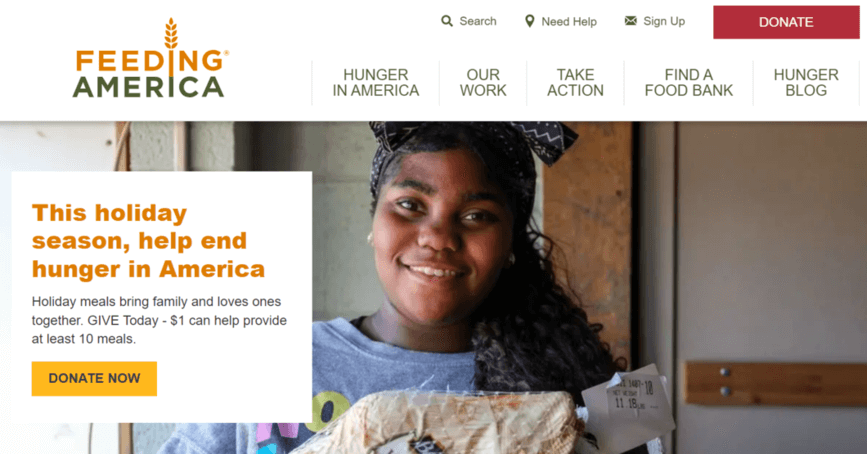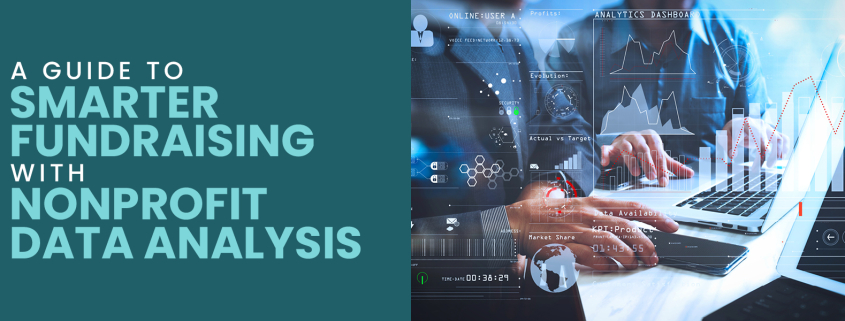A Guide to Smarter Fundraising with Nonprofit Data Analysis
In 2022, individuals gave $319.04 billion to charitable causes, making up 64% of total giving to nonprofits for the year. Because individual donors play such an integral role in nonprofit fundraising, your nonprofit must acquire, appeal to, and retain these supporters by creating personalized experiences.
Analyzing your data will uncover valuable insights and opportunities you can use to achieve both short-term goals like receiving that first gift from a new donor and long-term objectives like cultivating a large base of dedicated donors. Taking this smarter approach to fundraising also eliminates the guesswork and wasted resources spent on marketing and outreach tactics that don’t resonate with donors.
In this guide, we’ll cover the ins and outs of nonprofit data analysis and discuss how this strategy will help you boost donations while creating personal connections with your supporters. To get started, your nonprofit will need to look inward to identify its top fundraising challenges.
Identify fundraising challenges.
Before you begin analyzing your data, get a sense of what you’ll be looking for by outlining your organization’s challenges and goals. You should be able to solve these challenges by gaining a more thorough understanding of your donors’ backgrounds, giving behaviors, and sentiments for your nonprofit.
For example, perhaps your nonprofit struggles to:
- Retain donors and motivate repeat donations
- Develop innovative campaigns that align with supporters’ interests
- Identify qualified major donor prospects
- Personalize communications and donor experiences
- Engage and communicate with donors effectively
- Accurately predict fundraising revenue
Analyzing your nonprofit’s data will help you determine creative fixes to your challenges. For example, let’s say your nonprofit aims to bring convenient internet access into the homes of those living in rural communities—but you struggle to retain and engage donors with your direct mail campaigns.
You analyze your data and find that many of your donors and beneficiaries are older. After creating several different versions of your direct mail materials, you find that recipients respond most often to messages that leverage storytelling, use larger print, and feature imagery and graphics that evoke a sense of nostalgia.
Analyze fundraising data.
Once you determine which fundraising challenges are your nonprofit’s top priorities, you can begin looking for insights and next steps within your data. To get the most out of your data, screen for updates regularly, use internal data and external appended sources, and rely on a wide range of data points.
Specifically, GivingDNA’s guide to data analytics for nonprofits recommends exploring the following data points:
- Constituent data: This includes metrics such as supporters’ giving behaviors, demographic information, and psychographic data. While this data can seem surface-level at first glance, digging deeper can reveal how much to ask a donor to give, when to time that ask, and more.
- Preferred communication channels: This data point simply reveals which communication channels your donors interact with most. These preferences often fall along generational lines (e.g., Gen Z may prefer text communications while older donors respond better to traditional marketing channels), but make sure to back up any assumptions you may have by referring to your data.
- Donor retention rates: Your retention rate is the percentage of donors who have made another donation within one year of their last gift. By keeping an eye on which donors you retain and which ones are at risk of lapsing, you can proactively steward loyal supporters and make progress toward re-engaging those who have lost interest.
- Wealth markers: These indicators, such as net worth, household income, and stock holdings, help you measure a donor’s capacity to give. With these insights, you can tailor fundraising and upgrade appeals to gently push boundaries while still being feasible for the donor.
Each of these data points will help you uncover new insights about who your donors are, what drives them to give, and which tactics resonate most with them. Use different types of data analysis—descriptive, predictive, and prescriptive—to identify these findings.
Descriptive analytics use current and historical data about your donors and campaigns to answer the question, “What happened?” Predictive analytics enable you to use those findings to forecast future behaviors and patterns. Using prescriptive analytics allows your nonprofit to leverage the power of machine learning to determine the best course of action to achieve its goals.
Optimize marketing strategies.
Your nonprofit should also use these findings to create more compelling, targeted marketing campaigns that acknowledge and align with supporters’ values. As Double the Donation’s guide to nonprofit marketing explains, personalizing your marketing messages will help you learn more about donors’ preferences over time so you can build long-term relationships and gain reliable support.
Some of the ways you can create personalized marketing messages using data include:
- Segmenting donors. Create groups of donors based on shared characteristics, such as their average gift size, age, or communication preferences. Then, create unique messages for each group that are tailored to those characteristics. For example, you might create a segment of donors who tend to make large donations at the end of the year. Then, send them emails wishing them happy holidays, spreading awareness of your year-end fundraiser, and providing convenient links to your donation form.
- Sharing individualized engagement opportunities. Your supporters have different strengths, and interests that you can appeal to via target communications. Based on factors like past event attendance, donations to specific programs or initiatives, and support of other organizations, you can promote other ways they can get involved outside of donating. If a supporter frequently attends your environmental protection agency’s events about reducing waste and plastic use, they may be interested in joining your volunteer-led beach clean-ups.
- Tailor calls to action (CTAs). CTAs are short messages that motivate supporters to take a desired action, such as “Donate Now!” While CTAs should be simple and make only one ask of the reader, consider customizing them to name or appeal to the unique reasons your supporters have for donating. For example, this CTA on Feeding America’s homepage urges donors to give to help end hunger in America and explains that donations of only $1 can provide at least 10 meals.

Additionally, consider working with nonprofit influencers who operate in your space. Choose influencers who align with your supporters’ values or send out a survey to support asking if there are any public figures they follow for updates about your cause. Not only does this strategy allow you to connect with existing supporters in a new way, but the influencer will spread awareness of your organization to previously untapped audiences.
Remember that your nonprofit can use insights about donors and their giving behaviors for more than just fundraising. In addition to informing decisions about your marketing strategies, this nonprofit data can help you recruit volunteers, proactively identify donors at risk of lapsing, and acquire new donors who are excited about supporting your mission.
